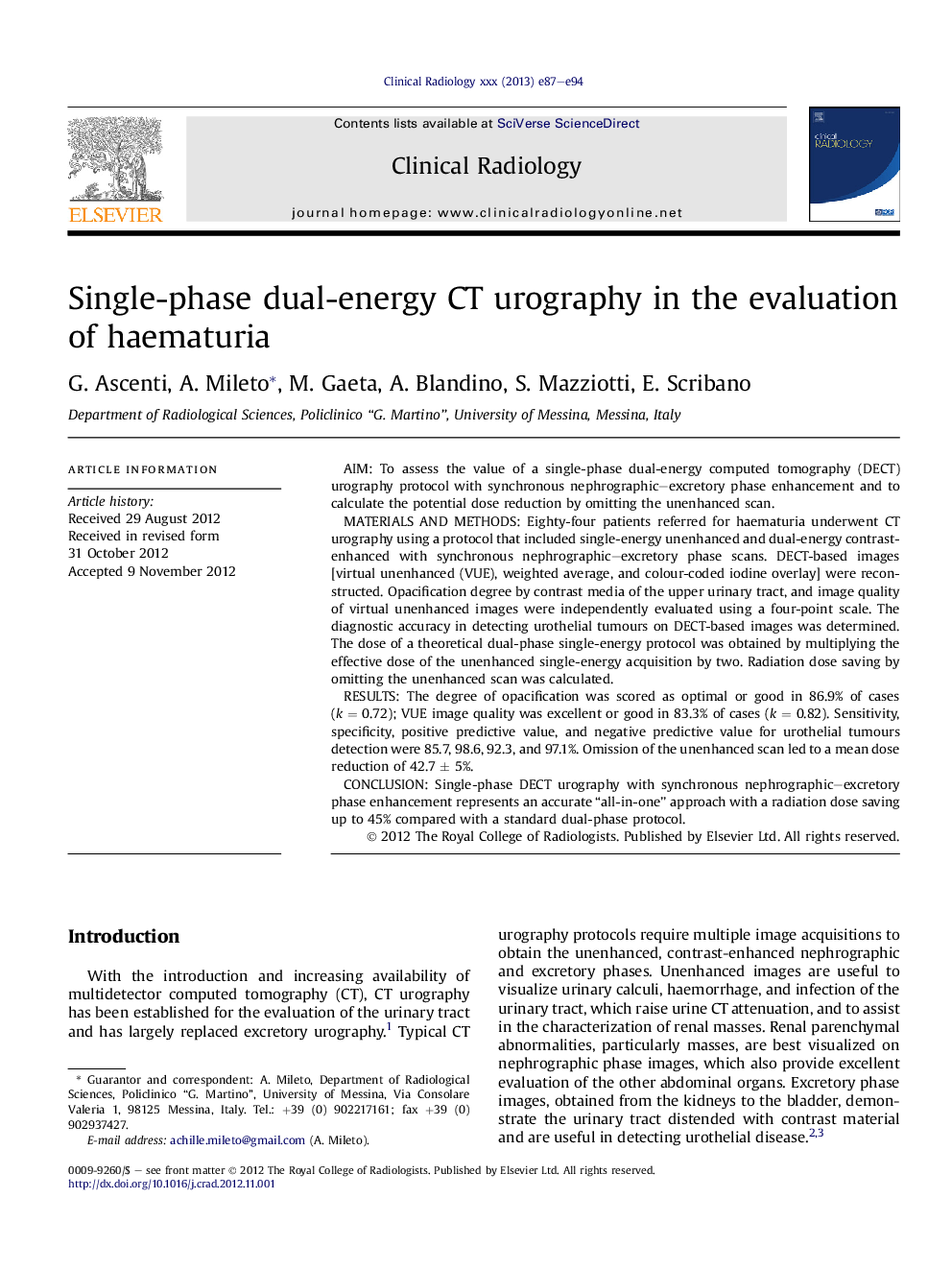| Article ID | Journal | Published Year | Pages | File Type |
|---|---|---|---|---|
| 3982153 | Clinical Radiology | 2013 | 8 Pages |
AimTo assess the value of a single-phase dual-energy computed tomography (DECT) urography protocol with synchronous nephrographic–excretory phase enhancement and to calculate the potential dose reduction by omitting the unenhanced scan.Materials and methodsEighty-four patients referred for haematuria underwent CT urography using a protocol that included single-energy unenhanced and dual-energy contrast-enhanced with synchronous nephrographic–excretory phase scans. DECT-based images [virtual unenhanced (VUE), weighted average, and colour-coded iodine overlay] were reconstructed. Opacification degree by contrast media of the upper urinary tract, and image quality of virtual unenhanced images were independently evaluated using a four-point scale. The diagnostic accuracy in detecting urothelial tumours on DECT-based images was determined. The dose of a theoretical dual-phase single-energy protocol was obtained by multiplying the effective dose of the unenhanced single-energy acquisition by two. Radiation dose saving by omitting the unenhanced scan was calculated.ResultsThe degree of opacification was scored as optimal or good in 86.9% of cases (k = 0.72); VUE image quality was excellent or good in 83.3% of cases (k = 0.82). Sensitivity, specificity, positive predictive value, and negative predictive value for urothelial tumours detection were 85.7, 98.6, 92.3, and 97.1%. Omission of the unenhanced scan led to a mean dose reduction of 42.7 ± 5%.ConclusionSingle-phase DECT urography with synchronous nephrographic–excretory phase enhancement represents an accurate “all-in-one’’ approach with a radiation dose saving up to 45% compared with a standard dual-phase protocol.
